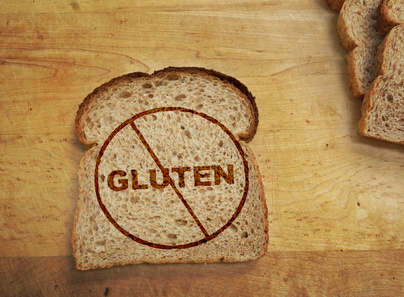
What is gluten intolerance?
Gluten intolerance is a physical condition in your gut. Gluten is a large protein found in wheat, barley, and rye that when eaten can cause a person’s digestive system to react negatively. Undigested gluten proteins are treated like a foreign invader by the body, causing a wide variety of symptoms. The microvilli in the small intestine are flattened out over time, which gives the small intestine much less surface area to absorb nutrients in food, which can lead to malnutrition.
The modern wheat plant isn’t what it used to be. In the late 1970’s the wheat plant was modified by man to create much larger yields of the grain. This modification also increased the amount of gluten in the plant 4 fold. This explains why gluten intolerance has been sharply on the rise in the last couple of decades. The amount of gluten in bread and other products is much more than in the 1940’s, 50’s, and 60’s. In addition gluten is added to many processed products to give it a better appearance and texture.
12 signs you have gluten intolerance:
- Autoimmune diseases like Hashimoto’s, Graves’, rheumatoid arthritis, M.S., Crohn’s, ulcerative colitis, and dermatitis, to name a few. Some research suggests that food allergies such as gluten can get the ball rolling, so to speak, to a full-blown autoimmune condition.
- Depression, anxiety, and other mood disorders.
- Chronic fatigue and brain fog, even if you sleep enough. It might not be in your head!
- Dental and bone issues: Weak teeth and bones, and/or broken teeth and bones due to calcium malabsorption.
- Unexplained weight gain or loss. Are you having a difficult time losing or gaining weight?
- Belly bloat that never seems to go away.
- Skin problems. Unexplained rashes, and “chicken skin” (keratosis pilaris) on the backs of arms.
- Hormonal imbalances causing irregular menstrual cycles, hot flashes, low energy, erratic sleep patterns.
- Joint and muscle aches.
- Migraine headaches.
- Systemic inflammation. This can be very dangerous if gone unchecked for a long period of time because it can lead to many health problems including autoimmune conditions.
- Low immunity. Frequent colds and flu.
Test for gluten intolerance easily
A gluten intolerance test does not require a blood test, or even a doctor. You can easily conduct your own test through an elimination diet. Eliminate ALL gluten 100% from your diet (be absolutely sure you are eliminating it 100% – check sauces and seasonings as they contain gluten often.) Eliminate for 10 -14 days, then reintroduce it by eating a large quantity of gluten such as a bowl of pasta or several pieces of wheat bread. Wait for reaction(s) which can be anything from a skin outbreak, a migraine, belly bloat, or mood issues. A reaction signifies intolerance.
An elimination diet can be used to test for any food sensitivity!